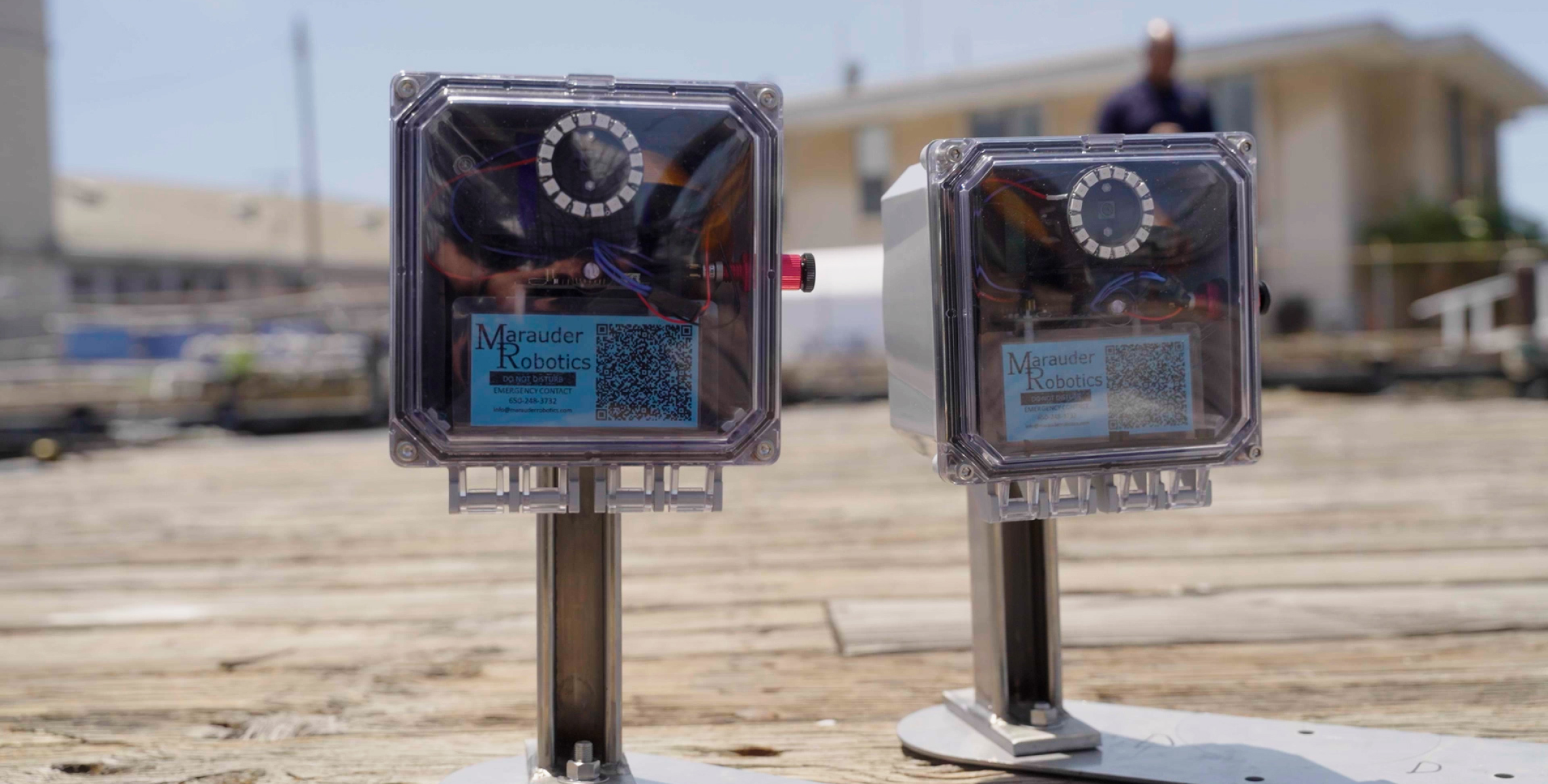Marauder Robotics
How robots are automating kelp forest restoration and advancing cloud-connected marine conservation
Most people know that the health of our oceans plays a major role in the health of our planet. What many don’t realize, however, is the extent to which the health of our oceans hangs in the balance of certain imbalanced ecosystems, thrown off by demand-driven human activities like overfishing and pollution. Kelp forests are one such ecosystem, widely considered one of the most productive ecosystems on Earth. These ecosystems are experiencing massive global, human-induced declines and while solving for these declines remains the ultimate goal, interim solutions are desperately needed to mitigate the damages. Marauder Robotics is developing a promising technology with the potential to fill that gap.
Not only are they critical biodiversity hotspots, they also act as nursery habitats for many species we know and care about, both recreationally and commercially; in addition to providing food and shelter to thousands of species along a large part of the world’s coastlines, these dense, underwater towers of brown algae help mitigate the effects of climate change by absorbing carbon dioxide from the atmosphere.
As human activities and ocean temperatures increase stress on these forests, natural predators like otters, lobsters, and fish continue to disappear at alarming rates, as they have been for decades. Furthermore, recent outbreaks of disease have wiped out seastar populations in many regions, further reducing predation pressure on the urchin populations that largely control kelp growth. This has allowed their populations to explode and further disrupt the ecosystem’s homeostasis. Sea urchins cause significant damage to kelp forests by consuming all available plant biomass as their sustenance options dwindle and their population growth goes unchecked. In many cases kelp is almost completely eliminated, creating urchin barrens that pose a serious threat to the resilience of our ocean habitats and subsequent health of the food and air systems on which we all depend.
Traditionally, the process of restoring kelp forests has depended on manually managing urchin populations by sending divers armed with hammers to remove them from impacted regions. This process is time-consuming, expensive, and dangerous for the divers involved, not to mention extremely unscalable. With a total of 3.3 million acres in need of restoration across the globe, the diver deployment strategy was due for an innovative upgrade.
With backgrounds in biomechanical and mechanical engineering and a friendship spanning decades, these two engineers founded Marauder Robotics to create scalable high impact technologies that bring balance back to ocean ecosystems. Their team is developing a marine management tool that leverages computer vision, machine learning, and robotics to not only automate the manual tasks traditionally done by divers, but also to provide flexibility more generally to increase their clients’ efficiency. The Marauder system is a robust and rugged autonomous underwater vehicle platform and data collection hub system that can actively and effectively reduce sea urchin populations at scale.
One component of this system is the Local Urchin Reduction Equipment (LURE), a field-based device that lures urchins into one spot, aggregates them by the dozens, then sends you a real-time alert when they get to a certain density. This allows for a much more efficient robot deployment strategy, and will automatically connect to Marauder’s web portal, Healthy Oceans Management Engagement Resource (HOMER), for real-time access to data analytics and a video feed.
The team has been conducting early testing in Southern California, with plans in place to expand to Washington. Dr. Yancey has estimated that one robot could do the work of 75 commercial divers; where divers can typically only deploy for hours at a time at depths no greater than 120 feet, these artificial predators can be deployed a week at a time at greater depths with vastly lower associated costs.
“If you rely totally on robotics or technology, then you can make the problem worse. If you rely on humans only, then you can’t scale. So you need a combination of the two in order to come up with a solution that can scale…You need both.”
Dr. Dennis Yancy
Our support of Marauder Robotics began at the end of 2019, when they were beginning to explore the urchin removal concept and build a prototype for testing. They were in a similar position to many of the grantees we work with: rich in potential and good ideas but lacking in investors willing to assume the risk of early stage technology development. Fast forward to today, and Marauder Robotics has evolved into an innovative conservationist, working with The Bay Foundation to conduct pilot deployments and gather feedback from both partners and the environment on technological requirements and needed improvements. Long-term, their technology will enable better ocean stewardship and support marine conservation by providing equipment, tools, logistic services, and technology solutions to aquaculture operators, marine managers, fishermen, vessel maintenance workers, and conservationists.
